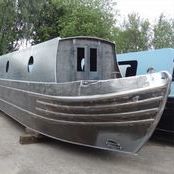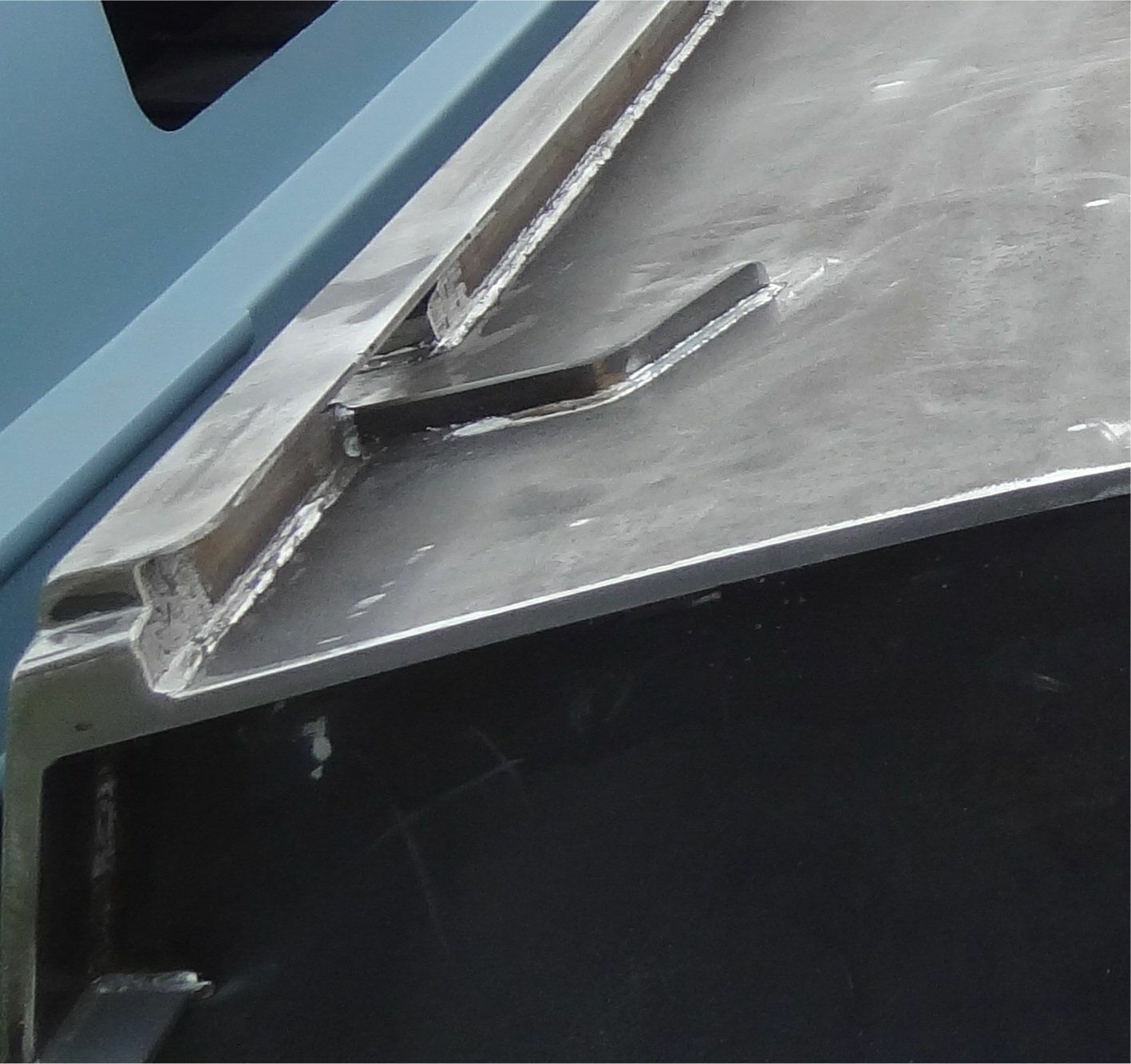-
Posts
1,249 -
Joined
-
Last visited
Content Type
Profiles
Forums
Events
Gallery
Blogs
Store
Everything posted by PeterF
-
Google search Victron inverter efficiency and the first Victron hit is https://www.victronenergy.com/upload/documents/Output-rating-operating-temperature-and-efficiency.pdf If you download the doc it explains inverter efficiency in detail and answers your questions making the point that was made earlier that a 20W load will be 50% effecient because the inverter will be drawing 40W total. when i did my power audit with a 3000VA victron inverter I counted the continuous 20W and took light loads as 95% efficient and heavy loads as 90%.
-

Converting to hybrid power... engine replacement etc?
PeterF replied to TandC's topic in Boat Building & Maintenance
Not sure if it has been mentioned above. The August edition of Waterways World had an article where a narrowboat had the Isuzu 42 removed to be replaced by a series hybrid. The skin tank was reused for a Fischer Panda 8kVA genset which used a new inverter/charger to charge a 48V 630Ah lead carbon battery bank which powered a BellMarine 15kW motor which needed a new skin tank. The cost of the retrofit was listed as £50,000. The article quoted a 60% reduction in diesel consumption. The work was done professionally so that is why it is much higher than the figures given earlier. -
When connecting dissimilar panels in series you have to make sure that that they have similar maximum power currents because if one panel has a lower maximum power current it can throttle the other panels. If the different panels have their maximum power points at different currents, the MPPT controller can not get all the panels working simultaneously at the individual maximum powers, it has to run at a single current and at least one panel will be away from its maximum power. The same applies for dissimilar panels connected in parallel, but in this case it is the maximum power voltages that should match closely.
-
From memory, the second long length gates at Thornes are rather decrepit and not servicable.
-

Idea, but need to check something...
PeterF replied to robtheplod's topic in Boat Building & Maintenance
As did mine https://www.midlandchandlers.co.uk/products/header-tank-std-mc-tt-006 -
I used to work for Johnson Matthey, one of their businesses was refining precious metals, gold bullion bars are much heavier than you expect with a density 2.5 times steel, the same as uranium or tungsten. The joke ueed to be to ask a new start to pick up one of the larger bars, you look at it and think 5kg, try to pick it up and find it is 12.5kg.I Not suggesting it is a viable ballast.
-
Steel ballast rather than brick or concrete, it is about 3 to 4 times as dense. That should allow a 6" deeper hull to sit down in the water without increased ballast space. Tony did mention high density ballast above, depleted uranium came to mind when I saw that.
-
This reply is not aimed at the Leesan product specifically but is more generic. Activated carbon filters adsorb the smell chemicals with a weak chemical bond and this bond will not break just by leaving the filter in clean air, it needs to be broken either by heating the filter to drive off or break the chemicals down or by washing the filter. For this service, soaking them in detergent for 20-30 mins may be enough to remove the adsorbed smells or heating up to 150°C. However, if the carbon is impregnated onto a foam carrier that limits how much you could heat it up.
-
2 panels of 300W each if charging 12V batteries will deliver at peak about 42Amp at mid day on a sunny day, but on average less than this. Most controllers will limit the current to their rated current, 30Amp in your case so you should be OK. Check the manual or see if you can find it on line as some controllers specify the maximum over capacity.
-
Had a solid fuel stove of some description complete with large insulated flue, showed it early in the programme.
-
Aqueduct marina gave another warning a couple of weeks ago repeating the no new bottles and short supplies mantra and saying do not leave it until you have both bottles empty.
-
Aqua Narrowboats from Barton Turns Marina, top quality narrowboats, but attract a premium price for the higher quality. Along the Trent and Mersey to Fradley, then the Coventry and Ashby or go a bit further south until you need to run around. I think a couple of others on the forum have hired from them before. I am not sure what 2020 will be like, but a lot of fleets have had very high occupancy this year.
-

C&RT say don't empty your compost toilet in our bins.
PeterF replied to Alan de Enfield's topic in General Boating
From the latest CRT boaters update. A start-up business providing a ‘doorstep’ collection service for boaters of composting toilet waste has started on the East London canal network. The Trust is providing funding to Circular Revolution to operate the service for a year-long pilot, to help boaters observe forthcoming restrictions Circular Revolution now provides regular scheduled collections, picking up bagged organic waste from collection caddies, every two weeks. The service also provides a 17 litre collection caddy, and compostable bags to use in the caddies.There is also an ad-hoc ‘pay as you poo’ service which can be ordered for larger volumes (up to 25 litres). The waste is safely transformed into soil conditioner for improving soil health, by an ISO registered facility. The regular fortnightly collections are ordered as a block of three months, equalling six collections, and costs £50. The ad hoc one-off collection is £25. The full article can be found at What to do with your number two (if you’re in London) -
It will be because of COVID to maintain social distancing between the chaperone on the boater, we went through in 2019 and steered ourselves with the chaperone on the stern with us.
-
Have a look at the second picture, mine is the same as this apart from the flat top of the handrail continues over the gap, so mine is more of a hole rather than a gap. This means that there is less risk of losing finger grip if not paying attention.
-
And ours
-
Yes it is an enjoyable experience, we have been through 3 times, the first time was in the summer when you were allowed to drive your own boat for the first time after the electric tugs were withdrawn, I was really glad that I drove and was not towed through. The boat had just been repainted 5 months earlier and never touched anything. To answer the OP's question, Last time we went from Huddersfield we took 5 days to slowly ascend to Marsden because we made better progress to Huddersfield than expected stopping at Above lock 8E but closer to lock 9E as the sides are shallower near the lock 8E end of this pound Above lock 17E just above titanic mills, there may be some rings here Above lock 24E, the guillotine lock in Slaithewaite, there are rings there from memory and quiet. Above lock 31E, there is a wider winding hole section here so levels do not fluctuate much At Marsden, tunnel mouth. On the way down Below lock 24W, Dobcross, opposite the warehouse Below lock 17W, Roaches, mooring rings here from memory Stalybridge but can not remember where we moored, probably by Tesco. Peak Forest near Portland basin.
-
This works well on our boat but it was added at the build stage, the ends of the handrail are welded closed and the diverter is welded to the roof.
-
Yep.
-

How much is too much Solar Power and how much is just enough?
PeterF replied to Porcupine's topic in New to Boating?
Angling the panels makes more impact in the winter when the sun is st a low angle but little difference in the summer. However, in the winter even if angling the panels doubles the yield, two times nothing is still nothing. Once averaged over the year, because most solar is harvested in the summer when angling is less effective, the annual impact is low. There s are websites where you can put in location and panel direction and angle and it will give average yields throughout the year so you can check flat and angled. -
Funny you should mention that, my builder did exactly that to the prop fitted by Colecraft before the boat was launched. I have noticed some flow noise on mine when I increase power which reduces as the boat speeds up, I put this down to the prop demanding more water than is arriving based on the boats forward speed and with an increased water supply to the prop as the boat picks up speed, the noise reduces. It is more noticeable on shallow sections but it is so slight it has never bothered me.
-
This is exactly what I do when my boat is at the home mooring. I only plug in if staying on the boat for a few days before setting off or when returning.
-
In an ideal world you would have your MPPT controller set voltages 0.1V higher than the mains charger, then when you have solar it causes the mains charger to stop charging so you get the free solar power if you pay for your shore power. However, this does not always work perfectly with separate chargers as there may be some errors in voltage readings and they may have different battery temperature compensation and will undoubtedly have different rules for when to change from absorption to float. Having both mains charging and MPPT from one supplier communication together with common voltage and battery temperature measurement is required to ensure that they play happily together.
-
If the tape is on the top of the chute it can get damaged dragging sharp objects out of the chute, having it on the lid keeps it out of the way of damage.



